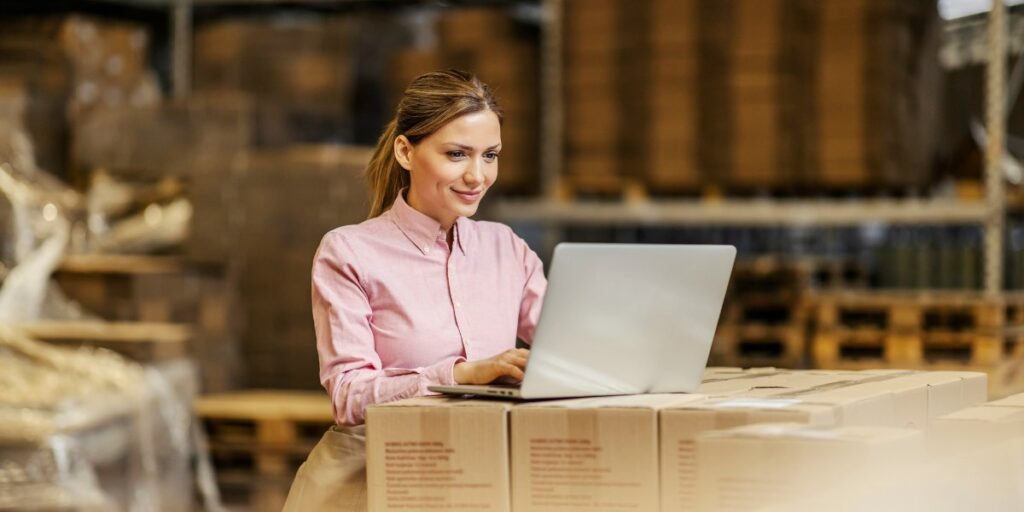The growing interest in sustainability has prompted a variety of changes in the retail sector, with refill stations emerging as a notable trend. These stations, which allow customers to bring their own containers and refill products like shampoo, soap, detergent, and more, present a potential shift in the way businesses manage packaging and environmental impact. While still a relatively new concept, refill stations offer an opportunity for businesses to align with eco-conscious consumer preferences while addressing broader environmental concerns.
Read also: A Strategic Shift Toward Sustainability
What Are Refill Stations and How Do They Function?
Refill stations operate as retail spaces where customers can purchase products without the need for disposable packaging. Instead of buying products in plastic containers, customers bring their own reusable containers to refill. This can apply to a wide range of products, from personal care items like shampoo and soap to cleaning products and pantry staples.
The environmental impact of refill stations is significant, particularly when it comes to reducing packaging waste. Traditional packaging materials, especially plastics, contribute to environmental degradation when they are disposed of improperly. Refill stations help address this by minimizing the need for single-use plastic containers, promoting the reuse of containers, and reducing the overall waste footprint of the retail sector. By facilitating the reuse of containers, these stations contribute to a circular economy model, which aims to reduce waste and make better use of existing resources.
Why Are Refill Stations Gaining Attention?
The increasing popularity of refill stations can be attributed to several factors. A significant driver is the growing awareness of the environmental impact of consumer goods packaging. Plastics, in particular, have become a focal point of concern due to their long-lasting nature and tendency to accumulate in ecosystems. As individuals and communities become more conscious of their environmental footprints, they are turning to alternatives such as refill stations that offer a way to reduce packaging waste.
Additionally, consumer behavior is evolving. Younger generations, in particular, have shown a greater willingness to adopt sustainable practices. This demographic tends to be more environmentally conscious, making the shift toward refill stations an attractive option for those seeking ways to align their purchasing habits with their values. While sustainability has long been a consideration for a small segment of the population, it has gained wider appeal and is now influencing purchasing decisions across a broader spectrum of consumers.
As environmental concerns gain more prominence globally, businesses are increasingly recognizing the importance of sustainability in their operations. In response, many are looking for ways to meet the demand for eco-friendly options, which has led to the development and expansion of refill stations. Businesses that adopt refillable solutions are not only meeting consumer demand but are also positioning themselves as part of a larger movement toward reducing waste and improving environmental outcomes.
How Can Refill Stations Benefit Retailers?
In addition to offering environmental benefits, refill stations present several potential advantages for businesses. One of the most notable is cost savings. Traditionally, retailers incur significant costs for packaging materials, which need to be produced, stored, and transported. By shifting to refill stations, retailers can reduce their reliance on disposable packaging, which in turn lowers their overall operational costs. With packaging accounting for a large portion of retail expenses, the reduction in these costs can provide businesses with greater financial flexibility.
Refill stations can also offer increased customer loyalty. As sustainability becomes more important to consumers, businesses that embrace eco-friendly practices can attract a dedicated customer base. For many consumers, supporting businesses that share their values is an important consideration when choosing where to shop. Refill stations offer a way for customers to feel more connected to the brand by allowing them to participate in the process of reducing waste. This can foster a sense of community and encourage repeat visits, which benefits businesses in the long term.
Beyond customer loyalty, refill stations can help businesses differentiate themselves in a competitive marketplace. As more companies adopt sustainable practices, offering a refillable option can help businesses stand out and appeal to an increasingly eco-conscious market. By introducing refill stations, retailers can signal their commitment to sustainability, which can enhance their reputation and attract attention from both media and consumers.
Furthermore, refill stations may create new revenue streams. In some cases, businesses might offer incentives such as discounts or loyalty points for customers who use refillable containers, which can encourage repeat purchases and increase overall sales. While the initial investment in setting up refill stations may be substantial, the long-term potential for customer retention and growth can outweigh these costs, making it a worthwhile consideration for many businesses.
What Challenges Do Refill Stations Face?
Despite their potential, refill stations are not without challenges. One of the main obstacles is logistical complexity. Ensuring that refill stations are stocked properly with a wide range of products, maintaining inventory, and adhering to hygiene standards can be demanding. Businesses must also manage the cleanliness of containers, as customers may bring containers that are not properly cleaned, which could lead to contamination. Implementing protocols to maintain product integrity while ensuring the safety of customers is crucial for the success of refill stations.
Another challenge is consumer education. While refill stations are becoming more popular, many customers are still unfamiliar with the concept or unsure of how to use them. Retailers must invest time and resources in educating their customers about how refill stations work, the benefits of using them, and how to properly clean and reuse containers. Without sufficient education, customers may be reluctant to adopt refillable systems, limiting the effectiveness of the offering.
In addition, regulatory concerns can present challenges for businesses. Some products, particularly those in the food or beauty sectors, are subject to strict hygiene and safety regulations. Refill stations must adhere to these regulations to avoid potential health risks. Depending on the region, local health and safety rules may restrict the types of products that can be sold in bulk or refilled, which can complicate the process for retailers looking to implement refill systems.
What Is the Future of Refill Stations in Retail?
Looking ahead, refill stations are likely to continue growing in popularity as sustainability becomes an increasingly important factor in consumer decision-making. As more consumers seek eco-friendly alternatives, the demand for refill stations may increase, leading to wider adoption in both urban and rural areas. Refill stations are expected to expand beyond personal care and cleaning products to include other sectors, such as food, beverages, and pet care products.
The future of refill stations may also involve digital innovation. Retailers could implement smart refill stations that allow customers to track their purchases, receive personalized recommendations, or access automatic refills through apps or loyalty programs. By combining technology with sustainability, businesses could enhance the refill experience, making it more convenient and user-friendly for customers.
In addition, as businesses continue to focus on sustainability and reducing their environmental impact, refill stations could become a more common feature in both physical stores and e-commerce platforms. The growth of online shopping may also encourage retailers to explore ways to offer refillable options in the digital space, reducing the need for packaging while still providing customers with eco-friendly alternatives.
Read also: Smart Cities: Enhancing Sustainability and Efficiency
How Refill Stations Are Part of the Larger Sustainability Movement
Refill stations are just one piece of the puzzle in the larger movement toward sustainability in the retail sector. While they represent a small but growing segment of the market, their widespread adoption could have a significant impact on reducing waste and reshaping consumer habits. As more businesses explore ways to reduce their environmental footprint, refill stations offer an opportunity to move beyond traditional packaging models and contribute to a more sustainable future.
In summary, refill stations present a unique opportunity for businesses to align with the increasing demand for sustainable practices. While challenges remain, the potential benefits for both retailers and customers make refill stations a viable solution for those looking to reduce waste, save costs, and attract a dedicated, eco-conscious customer base. As sustainability continues to shape the future of retail, refill stations could play an important role in the transition to a more sustainable business model.















